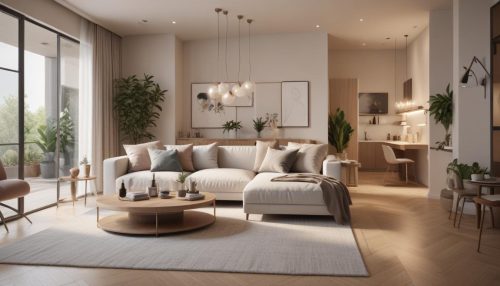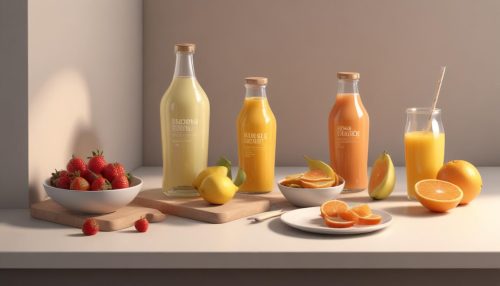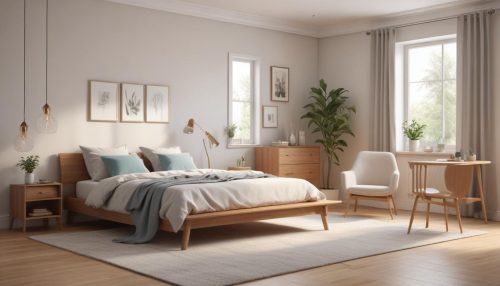Creating Workflows That Match Your Personality
Emma Brooks July 16, 2025
In today’s fast-paced work environment, creating workflows that align with your personality can significantly boost your productivity and reduce stress. Whether you’re a planner, a creative, or someone who thrives on flexibility, designing a workflow that matches your unique traits is essential for achieving long-term success. By understanding your personal work style, you can streamline your tasks, enhance focus, and maintain motivation, ensuring a smoother, more enjoyable workday. This article will explore how you can create workflows that fit your personality and provide actionable tips to help you stay organized and motivated.

Why Personalizing Your Workflow Matters
Each individual has their own way of processing information, approaching tasks, and handling stress. While some thrive under structured environments, others perform better when they have more flexibility. By understanding and embracing your personal preferences, you can design workflows that allow you to operate at your best.
Creating a workflow that matches your personality helps achieve several goals:
- Increased Productivity: When your workflow resonates with your natural tendencies, you’ll likely feel more energized and focused.
- Reduced Stress: By aligning your workflow with your personality, you can avoid burnout and work-related anxiety.
- Improved Satisfaction: Personalizing your work routine increases engagement, making it easier to stay motivated and committed.
Ultimately, a personalized workflow boosts both your efficiency and mental clarity, setting you up for long-term success.
Understanding Personality Types and Workflows
Before you can create a workflow that suits you, it’s essential to understand the various personality types and how they relate to work. According to research in psychology and workplace efficiency, personality traits play a crucial role in how people approach tasks and manage their time.
1. The Planner: Preferring Structure and Organization
If you’re the type of person who enjoys having a clear roadmap and a set list of tasks, you might identify with a more structured workflow. Planners tend to thrive with routines and detailed to-do lists. They prefer breaking large tasks into smaller steps, and they often use scheduling tools or time management apps to organize their days.
Tips for Planners:
- Create daily and weekly planners to map out tasks.
- Use task management tools like Trello, Asana, or Notion to track progress and set deadlines.
- Start each day with a brief review of your priorities.
2. The Creative: Flexibility and Freedom
If you’re someone who finds inspiration in spontaneous moments and dislikes rigid schedules, you may belong to the creative personality type. Creatives tend to excel in environments that offer freedom, where they can work in bursts of inspiration and are not confined by strict timelines. They work best when they feel passionate about a project and can navigate tasks with flexibility.
Tips for Creatives:
- Embrace unstructured time where you can brainstorm and experiment.
- Use mind mapping tools to visually organize ideas without rigid rules.
- Allow for periodic breaks to recharge creativity, avoiding burnout.
3. The Multitasker: Juggling Multiple Priorities
Multitaskers thrive in environments that require juggling various tasks simultaneously. They can efficiently handle multiple projects at once, often switching between tasks throughout the day. While multitasking can improve productivity in short bursts, it’s essential for multitaskers to manage their time and energy to avoid feeling scattered.
Tips for Multitaskers:
- Use time-blocking techniques to segment your day into focused periods.
- Prioritize tasks with a ‘to-do’ list and adjust as needed.
- Take advantage of digital tools that help track progress across multiple projects.
4. The Relaxed Worker: Taking Things One Step at a Time
If you’re someone who enjoys taking a more laid-back approach, you may prefer a workflow that allows you to proceed at a comfortable pace. Relaxed workers avoid excessive pressure and thrive when they can focus on one task at a time. They tend to be less concerned with rushing through tasks, instead focusing on quality and avoiding overwhelm.
Tips for Relaxed Workers:
- Set realistic goals and avoid overloading your schedule.
- Implement ‘buffer time’ in between tasks to prevent stress.
- Consider Pomodoro Technique (work for 25 minutes, then take a break) to help maintain focus.
How to Create a Workflow That Matches Your Personality
Now that we’ve identified different personality types, let’s dive into actionable steps for designing a workflow that aligns with your personal style. Here are practical strategies to help you create a productive system based on your unique needs.
1. Identify Your Core Work Style
Before you start customizing your workflow, take a moment to reflect on your work style. Are you energized by a structured day, or do you prefer more freedom? Identify which traits resonate most with you. If you’re unsure, try different approaches for a week or two and evaluate how each feels.
- Tip: Take a personality quiz like the Myers-Briggs Type Indicator (MBTI) to understand your work preferences.
2. Define Clear Priorities
Regardless of personality type, it’s essential to define your priorities. For some, clear priorities are key to staying organized, while others prefer flexibility in how they approach tasks. By aligning your workflow with your priorities, you can stay focused on what matters most.
- Tip: Use the Eisenhower Matrix to categorize tasks by urgency and importance. This helps you focus on what truly moves the needle.
3. Adopt Tools that Support Your Workflow
The tools you use can greatly influence your productivity. If you’re a planner, use apps like Google Calendar and Evernote to keep your tasks organized. If you’re more creative, use visual tools like Miro or MindMeister to brainstorm ideas without constraints.
- Tip: Try time-tracking apps like Toggl to assess how much time you spend on different tasks and identify areas to optimize.
4. Allow for Flexibility
Even if you prefer a structured approach, it’s important to allow some degree of flexibility in your workflow. Life can be unpredictable, and having the ability to adapt to changes can prevent stress. Incorporate buffer periods to accommodate unexpected events or creative bursts.
- Tip: Keep open slots in your schedule for impromptu tasks or creative inspiration.
5. Review and Adjust Regularly
Your workflow may need adjustments as your work style evolves or as your responsibilities change. Regularly assess what’s working and what’s not, and make necessary tweaks. This approach ensures that your workflow remains aligned with your goals and preferences.
- Tip: At the end of each week, reflect on what went well and what could be improved. This helps you optimize your approach moving forward.
Conclusion
Creating workflows that match your personality is one of the most effective ways to enhance productivity, reduce stress, and maintain long-term motivation. By embracing your natural work preferences, whether you’re a planner, a creative, or a multitasker, you can design a system that supports your unique style and needs.
Remember, the best workflow is one that allows you to stay focused, energized, and balanced. Whether you prefer a structured routine or a more flexible approach, personalizing your workflow will help you achieve better outcomes while maintaining your well-being.
References:
- Psychology Today (2023). “The Science of Personal Productivity: Understanding Personality and Workflow.” Available at: https://www.psychologytoday.com
- Trello – “Build a Workflow That Matches Your Personality” – https://atlassianblog.wpengine.com/
- Indeed – “10 Ways To Use a Personality Inventory for Career Searches” – https://www.indeed.com





